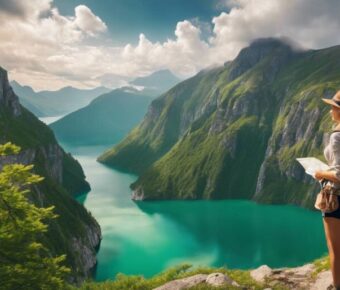
Tamarindo vs San Juan del Sur: 7 Essential Differences Between Costa Rica’s and Nicaragua’s Top Beach Towns in 2025
Choosing between Tamarindo and San Juan del Sur for your next beach getaway can be tricky. These two Central American surf towns offer similar vibes but very different experiences. Tamarindo is significantly more expensive, with daily costs averaging $144 compared to just $66 in San Juan del Sur, but it offers better beginner-friendly surf conditions and more tourist amenities.
San Juan del Sur in Nicaragua delivers a more authentic, off-the-beaten-path experience that many travelers find more interesting than its Costa Rican counterpart. While both towns have decent waves, Tamarindo’s surf scene caters exceptionally well to beginners who don’t want to venture too far from comfort. The trade-off comes in the wallet – rent prices in Tamarindo are a whopping 132% higher than in San Juan del Sur!
For budget-conscious travelers seeking cultural immersion, San Juan del Sur easily wins. But those wanting more amenities and gentler waves might prefer Tamarindo despite the higher price tag. Both offer that laid-back beach town atmosphere with opportunities for surfing, Spanish lessons, and nightlife at different price points.
Table of Contents
- Geographical Overview
- Location and Accessibility
- Climate and Best Time to Visit
- Cultural Landscape
- Historical Significance
- Local Lifestyle
- Cultural Events
- Natural Attractions
- Beaches and Coastal Beauty
- Eco-Tourism and Conservation Areas
- Volcanoes and Hiking Trails
- Accommodations and Lodging
- Types of Accommodations
- Cost Comparisons
- Popular Hotels and Resorts
- Activities and Experiences
- Water Sports and Adventures
- Land-Based Activities
- Cultural and Culinary Experiences
- Local Services and Amenities
- Transportation Options
- Dining and Cuisine
- Healthcare and Safety
- Real Estate and Long-Term Stays
- Buying Property
- Rental Market Trends
- Living as an Expat
- Nightlife and Entertainment
- Bars and Clubs
- Evening Activities
- Family-Friendly Entertainment
- Costs and Budgeting
- Daily Expense Breakdown
- Luxury vs. Budget Travel
- Money-Saving Tips
- Frequently Asked Questions
- What are the main differences in tourist attractions between Tamarindo and San Juan del Sur?
- Which destination offers a richer cultural experience, Tamarindo or San Juan del Sur?
- How do the nightlife and social scenes compare between Tamarindo and San Juan del Sur?
- In terms of budget, how do travel costs in Tamarindo compare to San Juan del Sur?
- What unique culinary experiences can one expect in Tamarindo versus San Juan del Sur?
- Are there any significant differences in the surfing conditions between Tamarindo and San Juan del Sur?
- Book Your Dream Experience
- More Travel Guides
Geographical Overview
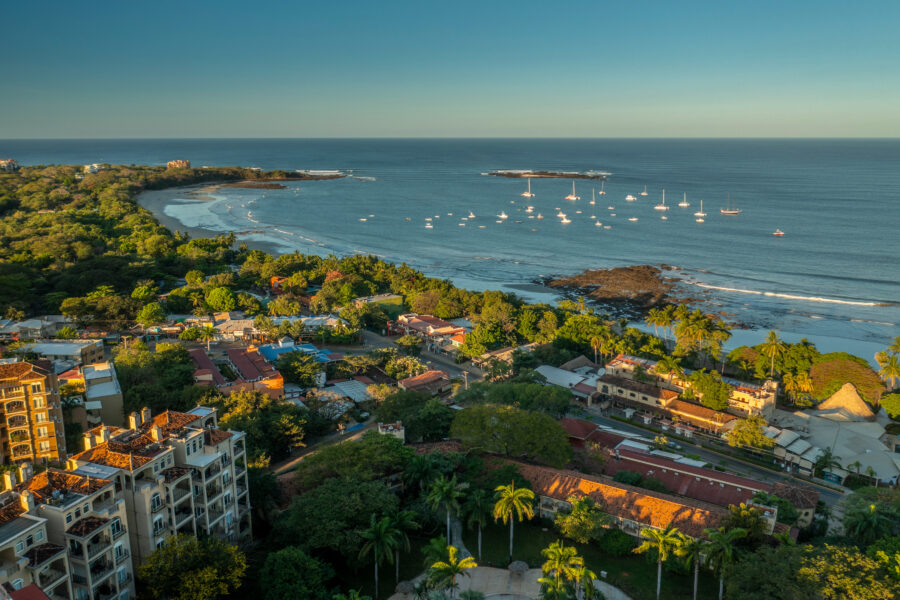
Despite being popular beach destinations in Central America, Tamarindo, Costa Rica, and San Juan del Sur, Nicaragua, offer distinctly different geographical experiences. Their locations, accessibility, and climate patterns shape the best times to visit and the. overall experience travelers can expect.
Location and Accessibility
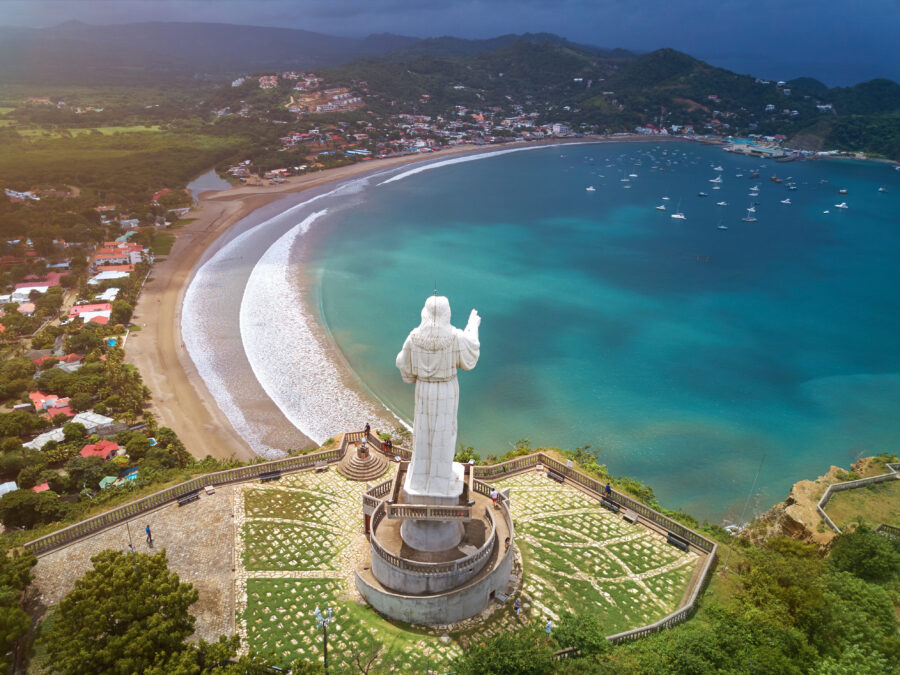
Tamarindo sits on Costa Rica’s Pacific coast in Guanacaste Province, about an hour’s drive from Liberia International Airport. This makes it one of the more accessible beach towns in Costa Rica for international travelers. The town is relatively small with only a few thousand residents, though it feels developed compared to other Costa Rican beach destinations.
San Juan del Sur is located on Nicaragua’s southwestern Pacific coast, approximately 2.5 hours from Managua’s international airport. It’s nestled in a horseshoe-shaped bay, creating a picturesque harbor setting. Getting to San Juan del Sur requires more effort than Tamarindo, contributing to its reputation as “off the beaten path.”
Both towns serve as gateways to nearby surf spots and beaches. Tamarindo connects easily to other Guanacaste destinations, while San Juan del Sur provides access to numerous hidden beaches along Nicaragua’s coast.
Climate and Best Time to Visit

Both destinations enjoy tropical climates with distinct dry and rainy seasons. Tamarindo receives about 164 hours of sunshine during summer, while San Juan del Sur gets slightly more, with 175 hours of sunny skies.
The dry season (December to April) is the most popular time to visit both locations. During these months, you’ll experience minimal rainfall and sunny days, perfect for beach activities and surfing. Temperatures typically range from 80-90°F (27-32°C) during the day.
The green season (May to November) brings afternoon showers, lush landscapes, and fewer tourists. Water temperatures remain warm year-round in both locations, hovering around 80°F (27°C). Surfers might prefer the rainy season when swells are more consistent, particularly in San Juan del Sur.
Budget-conscious travelers should note that prices spike during the dry season in both towns, especially around Christmas and Easter.
Cultural Landscape

The cultural scenes in Tamarindo and San Juan del Sur reflect their unique national identities while sharing a laid-back beach town vibe. Both destinations blend traditional Central American culture with international influences, though they express this mix differently.
Historical Significance
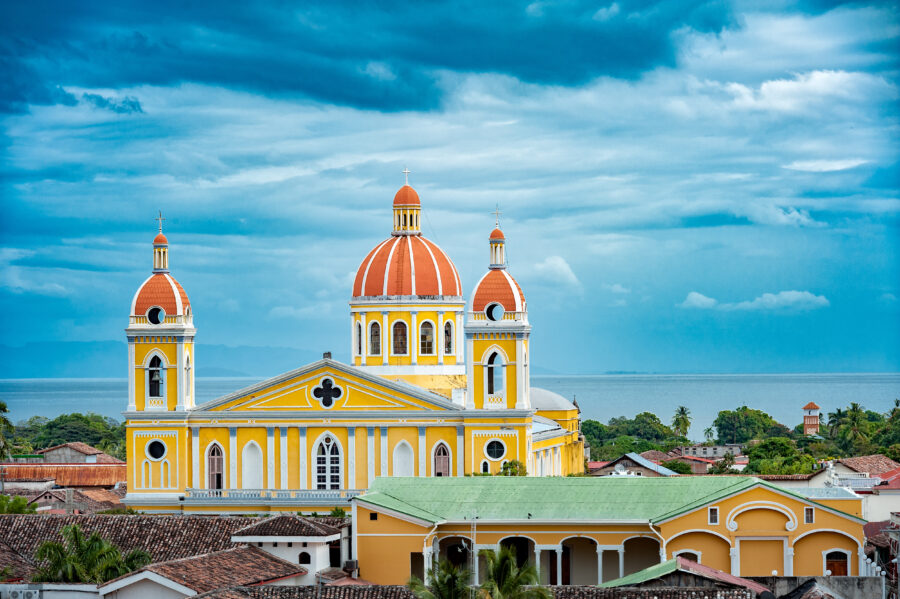
Nicaragua’s San Juan del Sur carries a richer historical weight than its Costa Rican counterpart. This fishing village dates back to the mid-1800s when it served as a crucial transit point during the California Gold Rush. Travelers heading to California’s goldfields would cross through Nicaragua, passing through San Juan del Sur before continuing their journey north.
The town also played a role during Nicaragua’s revolutionary period, and remnants of this history are still visible in local architecture and museums. Small exhibits documenting the Sandinista movement are located in several locations around town.
Granada, just a few hours from San Juan del Sur, offers day-trip opportunities to explore colonial architecture dating back to 1524, making it one of the oldest European-established American cities.
Tamarindo, by contrast, was primarily a fishing village until the 1980s when surfers discovered its perfect waves. Its historical significance is more recent but no less fascinating regarding rapid development.
Local Lifestyle
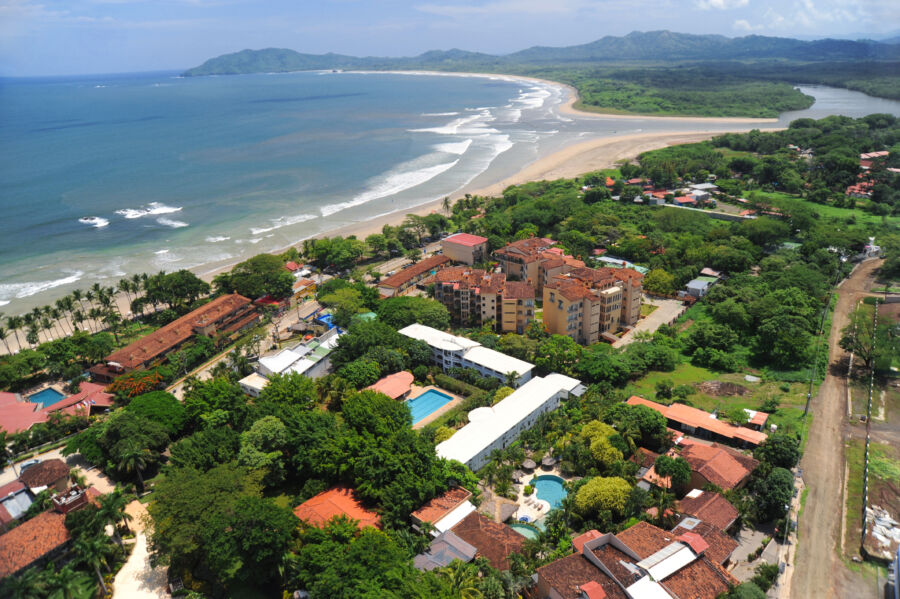
San Juan del Sur embraces a slower pace of life that feels authentically Nicaraguan. Locals gather in the central plaza in the evenings, and fishing remains an important part of daily life. You’ll see fishermen bringing in their catch at dawn while families stroll the malecón (waterfront) at sunset.
The town has a vibrant expat community that blends with locals, creating interesting cultural exchanges. Spanish is widely spoken, and fewer locals speak English compared to Tamarindo.
Tamarindo’s lifestyle feels more cosmopolitan and developed. The Costa Rican “pura Vida” philosophy permeates daily life with a distinctly international flair. The town caters more directly to tourists, and English is widely spoken in restaurants and shops.
Both towns love outdoor living, with locals and visitors embracing beach activities, outdoor dining, and nature appreciation. However, San Juan del Sur maintains more traditional Nicaraguan customs daily.
Cultural Events

San Juan del Sur hosts several festivals that showcase authentic Nicaraguan culture. Holy Week (Semana Santa) transforms the town as locals from Managua and surrounding areas flood for beach celebrations and religious processions. In June, the town’s patron saint festival features traditional music, dance, and food.
The San Juan del Sur Cerveza Festival brings together craft brewers across Nicaragua and Central America. For a deeper cultural experience, day trips to nearby Masaya offer access to Nicaragua’s largest crafts market and incredible volcanic views.
Tamarindo’s cultural calendar includes the Tamarindo Art Wave Festival, which showcases Costa Rican and international artists. The town celebrates Costa Rica’s Independence Day (September 15) with parades and traditional dance performances.
Surfing competitions bring international athletes and spectators throughout the year. Unlike San Juan del Sur, Tamarindo’s events blend Costa Rican traditions with more commercialized international influences.
Natural Attractions
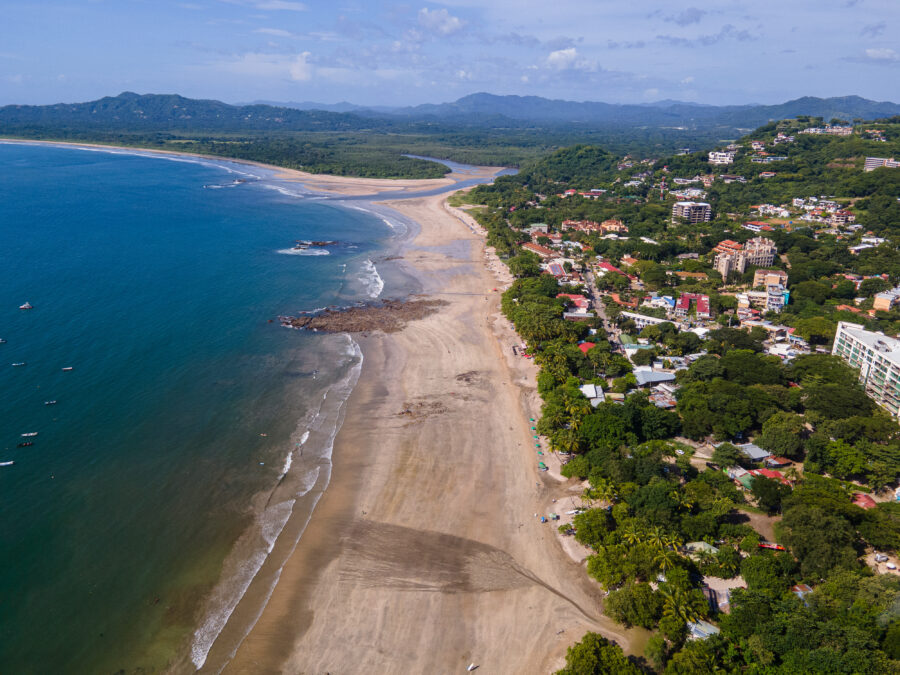
Both destinations offer stunning natural beauty but differ in what they provide for nature lovers. From pristine beaches to lush rainforests, these Central American hotspots have unique environmental features that appeal to different types of travelers.
Beaches and Coastal Beauty
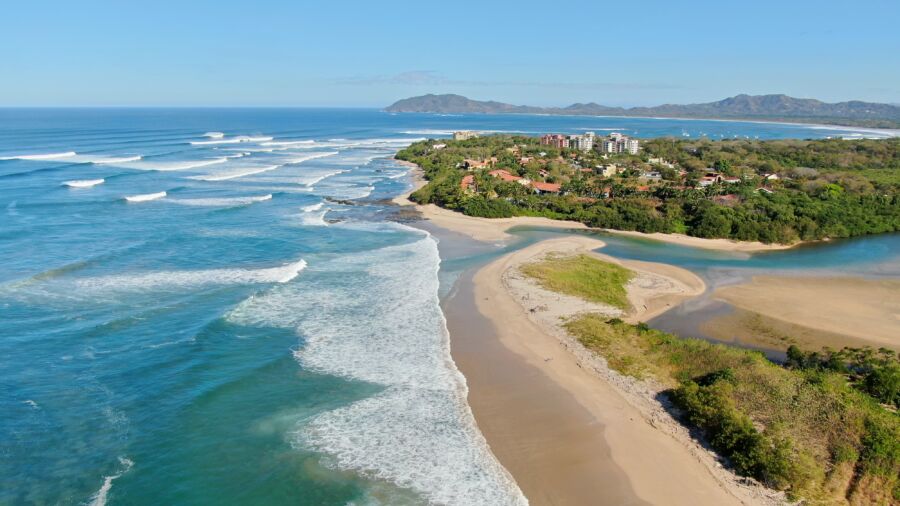
Tamarindo boasts a wide, crescent-shaped beach with golden sand stretching over a mile. The water here tends to be clearer than in San Juan del Sur, making it ideal for swimming and snorkeling. Nearby beaches like Playa Langosta offer quieter alternatives when Tamarindo gets crowded.
San Juan del Sur’s main beach has darker sand and choppier waters, but a stunning horseshoe bay frames it. The real beach treasures lie outside town. Just 20 minutes north, Playa Maderas is a surfer’s paradise with consistent waves and fewer crowds.
Popoyo, about an hour from San Juan del Sur, features world-class breaks that attract serious surfers. The beaches around San Juan generally feel more rustic and less developed than Tamarindo’s manicured shoreline.
Eco-Tourism and Conservation Areas
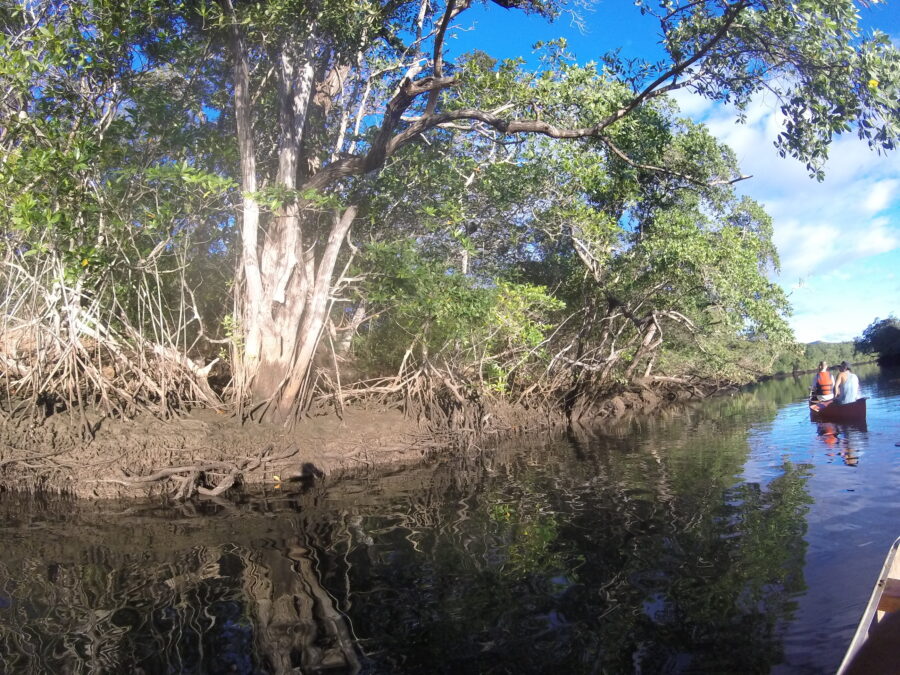
Tamarindo is near Las Baulas National Marine Park, a critical nesting ground for endangered leatherback turtles. From October to March, visitors can join guided tours to witness these massive turtles laying eggs—a truly magical experience.
San Juan del Sur has La Flor Wildlife Reserve, where olive ridley sea turtles come ashore in massive “arribadas” (mass nesting events). The reserve protects five of the world’s seven sea turtle species.
Both areas offer excellent wildlife viewing. Tamarindo’s estuary tours reveal crocodiles, monkeys, and exotic birds. The rainforests surrounding San Juan del Sur house howler monkeys, sloths, and colorful bird species.
Costa Rica’s conservation efforts are more established, giving Tamarindo better eco-tour infrastructure. Nicaragua’s emerging eco-tourism means more authentic, less crowded experiences around San Juan.
Volcanoes and Hiking Trails
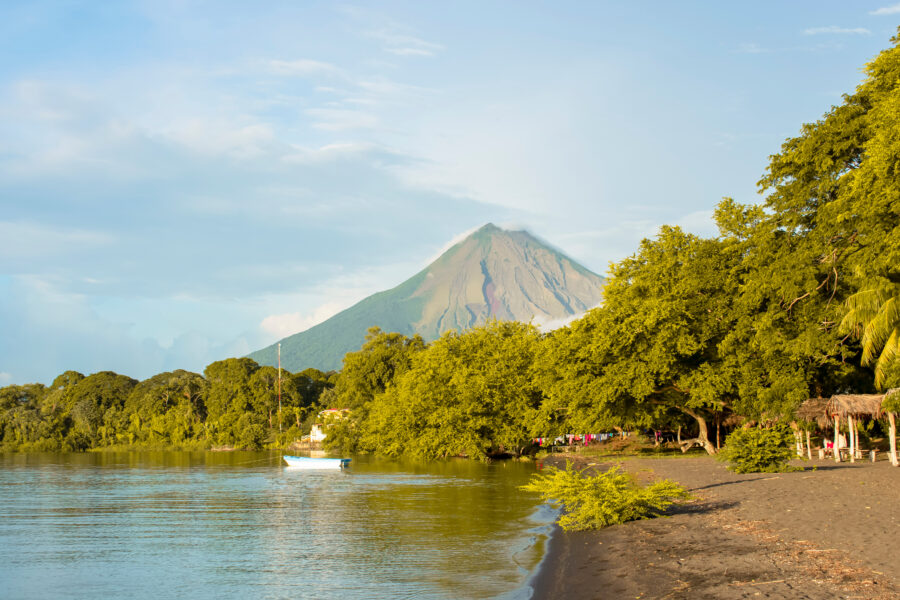
While Tamarindo doesn’t have volcanoes nearby, San Juan del Sur provides easy access to volcanic wonders. A day trip to Ometepe Island—formed by twin volcanoes rising from Lake Nicaragua—offers hiking opportunities on Concepción (active) and Maderas (dormant) volcanoes.
Hiking trails around San Juan del Sur include paths through tropical dry forests and coastal trails with spectacular Pacific views. The Cristo de la Misericordia statue trail rewards climbers with panoramic vistas of the bay and surrounding hills.
Tamarindo’s hiking options focus more on coastal walks and nearby wildlife refuges like Diria National Park. The terrain is generally flatter and easier to navigate than San Juan’s more rugged landscape.
For adventure seekers, San Juan del Sur’s proximity to Nicaragua’s volcanic chain gives it the edge, while Tamarindo offers more accessible nature experiences for all fitness levels.
Accommodations and Lodging

Finding the right place to stay can make or break your beach vacation. Tamarindo and San Juan del Sur offer different accommodation options at varying prices that cater to different types of travelers.
Types of Accommodations
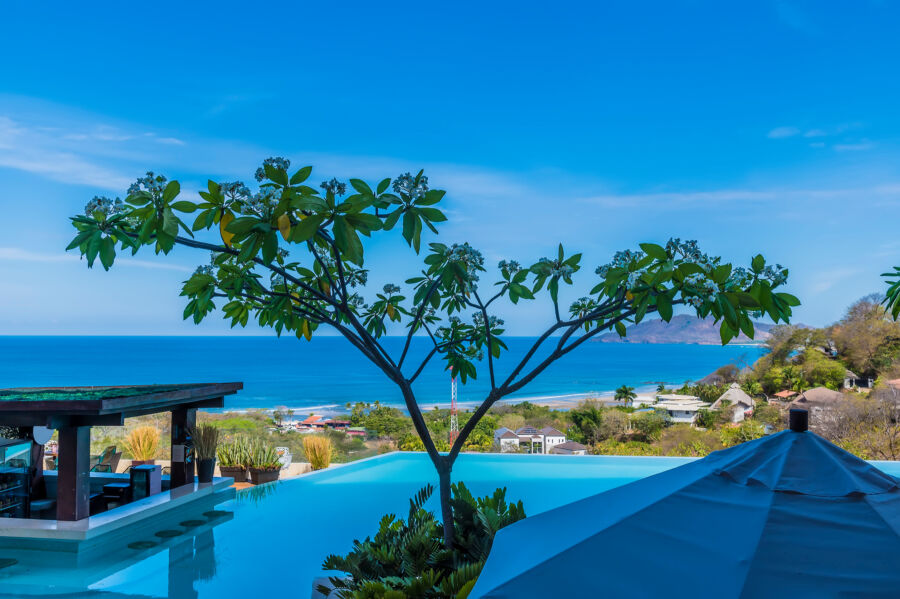
Both destinations provide a range of lodging options, but with notable differences. Tamarindo features more upscale resorts and condominiums catering to tourists seeking comfort. You’ll find numerous beachfront properties and vacation rentals managed by international chains.
San Juan del Sur offers a more laid-back vibe with locally-owned hostels, boutique hotels, and guesthouses. Backpackers love the budget-friendly hostels scattered throughout town. For longer stays, there are also monthly rentals available.
Real estate investment has boomed in both locations, with Tamarindo seeing more luxury development. San Juan del Sur maintains more rustic charm with fewer high-rise buildings and more traditional architecture.
Both towns have seen growth in eco-lodges and sustainable accommodations that blend with the natural surroundings.
Cost Comparisons
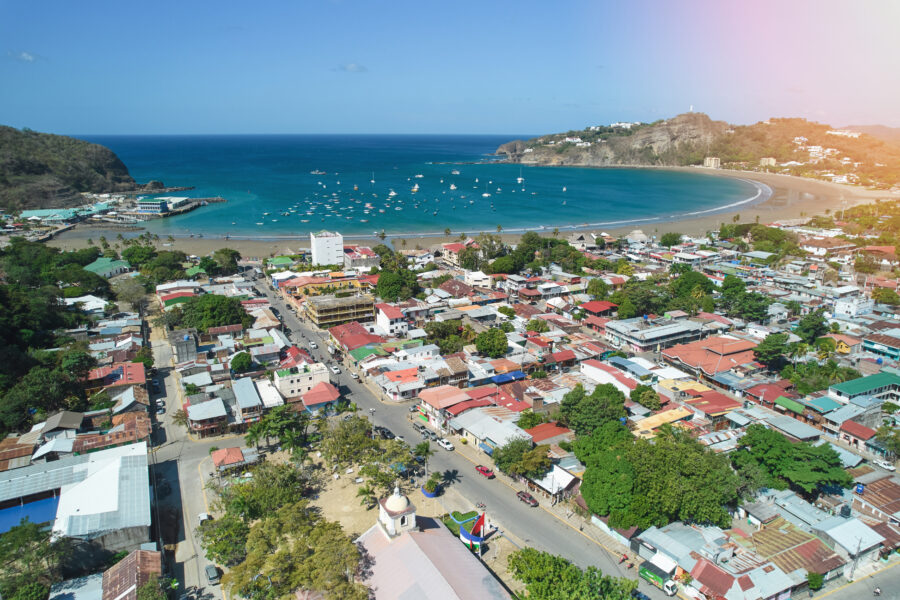
The price difference between these destinations is significant. San Juan del Sur is considerably more affordable, with daily costs averaging around $66 per person compared to Tamarindo’s $144.
A budget hostel in San Juan del Sur might cost $10-15 per night, while similar accommodations in Tamarindo typically start at $20-25. Mid-range hotels follow the same pattern:
| Accommodation Type | San Juan del Sur | Tamarindo |
|---|---|---|
| Hostel dorm bed | $10-15 | $20-25 |
| Budget private room | $25-40 | $50-80 |
| Mid-range hotel | $40-70 | $80-150 |
| Luxury option | $100+ | $200+ |
San Juan del Sur generally offers better value for money. Your dollar stretches further, making it ideal for budget travelers or those planning extended stays.
Popular Hotels and Resorts
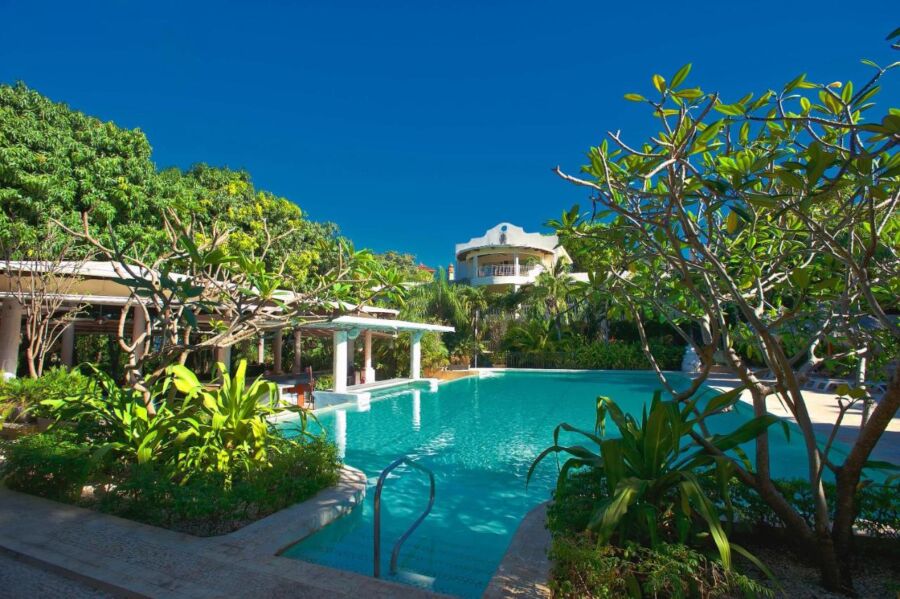
In Tamarindo, the Diria Beach Resort is a favorite beachfront property with multiple pools and restaurants. Capitán Suizo offers a boutique experience with eco-friendly practices and stunning grounds.
For luxury seekers, the JW Marriott at nearby Hacienda Pinilla provides an upscale experience with golf courses and private beaches.
San Juan del Sur’s popular options include Pelican Eyes Resort, which has hillside infinity pools and spectacular bay views. Hotel Alcazar offers mid-range comfort within walking distance to the beach and nightlife.
Hostel options like Casa Oro and Naked Tiger have built reputations for social atmospheres and organized activities. These places regularly host events that help solo travelers connect.
Villa Isabella in San Juan del Sur provides apartment-style accommodations with kitchens and multiple bedrooms for families.
Activities and Experiences
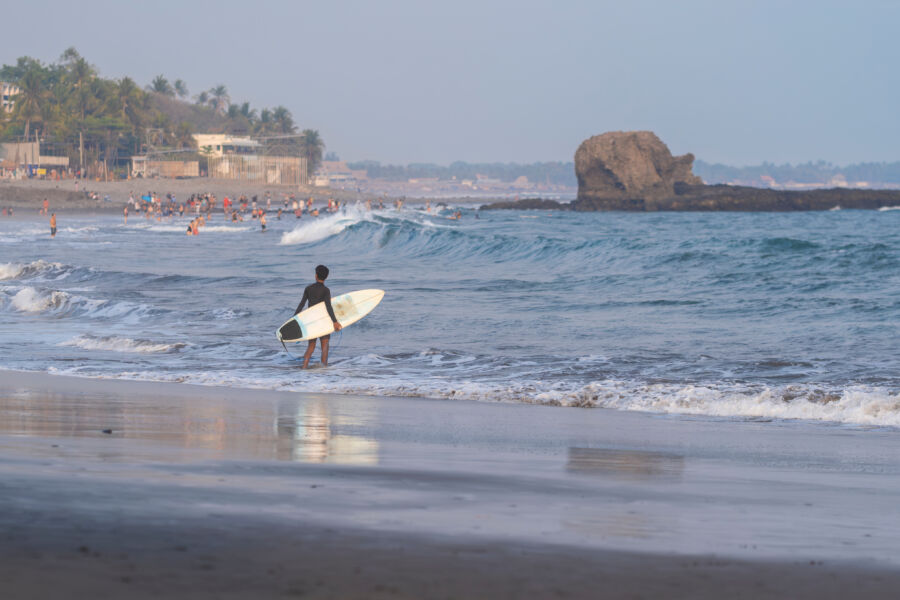
Both destinations offer exciting adventures for travelers seeking fun in the sun. From thrilling water sports to cultural immersion, your days will be packed with memorable experiences regardless of location.
Water Sports and Adventures

Surfing tops the list in both locations, but with notable differences. Tamarindo offers gentler waves perfect for beginners, with several surf schools providing lessons for first-timers. More experienced surfers often head to nearby Playa Grande for bigger challenges. The beach stretches wide with plenty of space for everyone.
San Juan del Sur serves as a gateway to numerous surfing beaches. While the town beach isn’t ideal for surfing, nearby spots like Playa Maderas and Playa Hermosa offer world-class waves. Many book surf lessons and transportation as packages.
Both towns excel in other water activities, too. Fishing charters, catamaran cruises, and snorkeling trips run daily in Tamarindo. Boat tours through the estuary reveal incredible wildlife, including crocodiles and monkeys.
Land-Based Activities
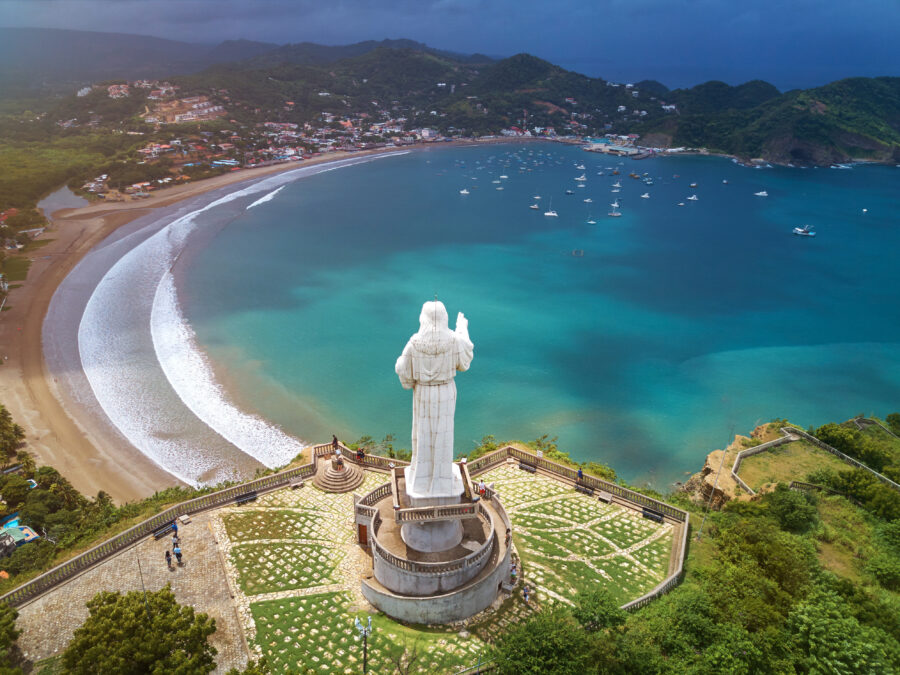
Hiking opportunities abound near both destinations. San Juan del Sur features the iconic Christ statue (Cristo de la Misericordia), offering breathtaking bay views after a moderate hike. The surrounding hills provide scenic trails for nature lovers.
Tamarindo sits close to several national parks where guided tours help you spot howler monkeys, sloths, and colorful birds. Canopy zipline tours through the forest deliver unforgettable thrills in both locations.
Transportation differs between the towns. Tamarindo has more organized tourist services, while San Juan del Sur offers a more local experience with taxis and tuk-tuks readily available. Some visitors enjoy renting ATVs or scooters to explore independently.
Horse riding excursions along the beach make for magical sunset experiences in both locations, though they tend to be more rustic and authentic in Nicaragua.
Cultural and Culinary Experiences
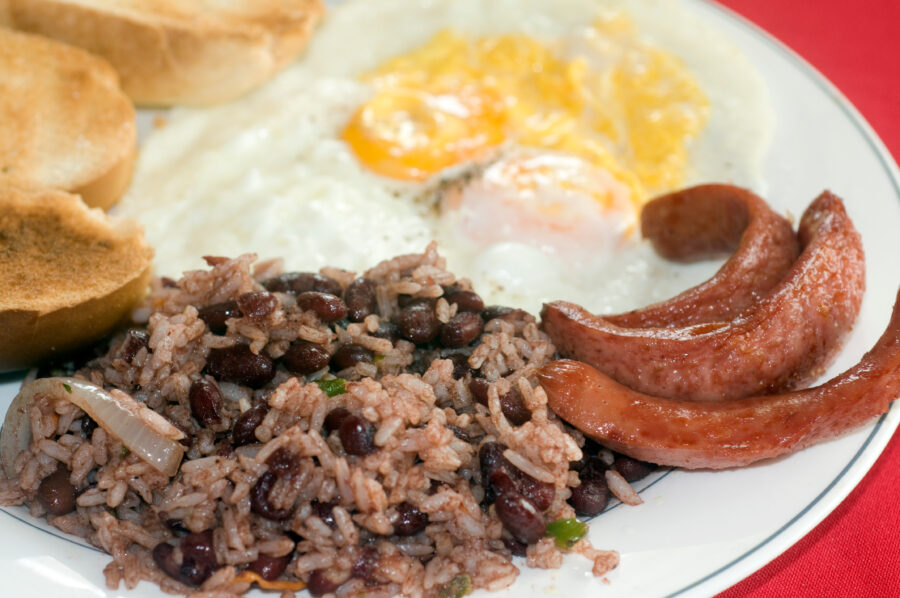
San Juan del Sur offers a more authentic Central American feel. The colorful buildings and local markets create a vibrant atmosphere where visitors can experience Nicaraguan culture firsthand. Street food vendors serve delicious local specialties like quesillo and vigorón.
Spanish language immersion comes naturally here as fewer locals speak English than in tourist-heavy Tamarindo. This creates more opportunities for cultural exchange.
Tamarindo has evolved into a more international destination with restaurants serving cuisine worldwide. Weekly farmers’ markets showcase local produce, handicrafts, and street performances.
Both towns come alive at night with beach bars and live music. San Juan del Sur is famous for its Sunday Funday pool party, while Tamarindo offers more upscale dining and entertainment options. Food tours in either location provide delicious insights into local culinary traditions.
Local Services and Amenities
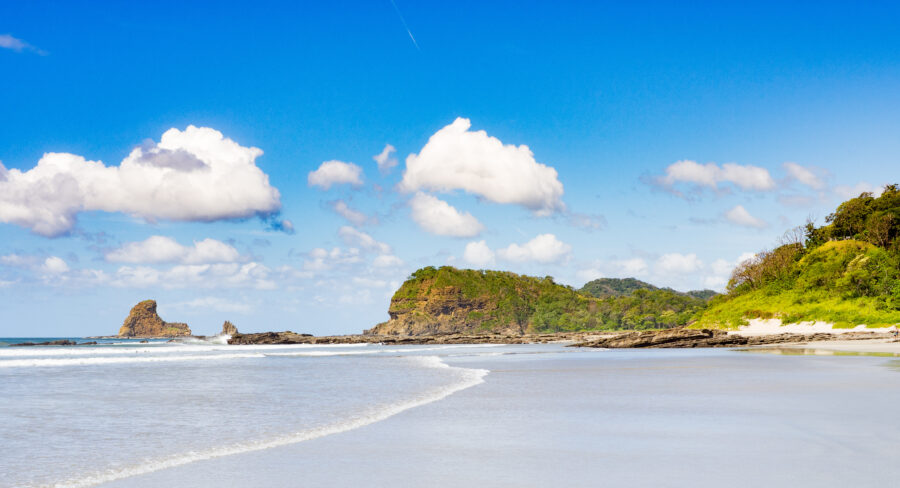
Tamarindo and San Juan del Sur offer travelers distinct experiences regarding getting around, eating out, and staying healthy during your visit. The services available reflect each town’s unique character and development level.
Transportation Options
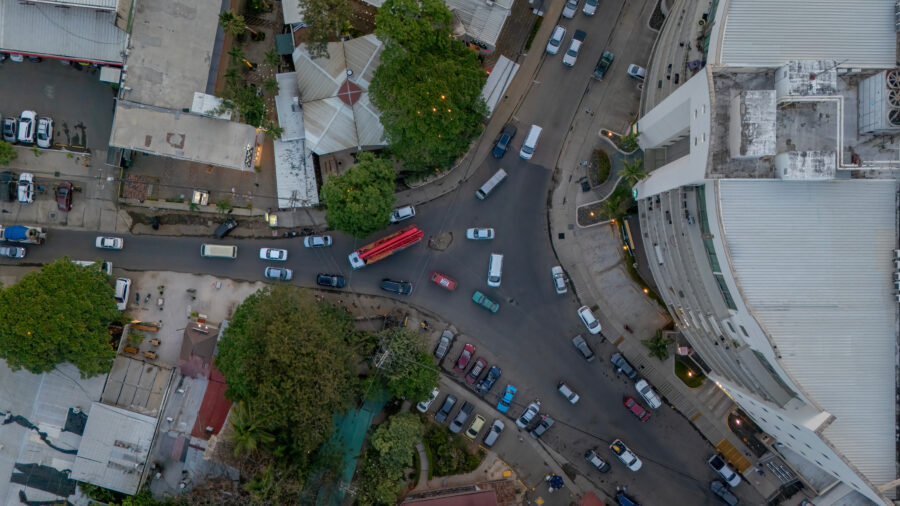
Getting around in Tamarindo is generally more developed but pricier than in San Juan del Sur. Tamarindo offers several car rental agencies, like Budget and Dollar, right in town, making exploring Costa Rica’s Guanacaste region easy. Expect to pay $40-60 daily for a basic vehicle, with 4WD recommended for exploring beyond main roads.
San Juan del Sur has fewer formal rental options but more budget-friendly transportation. Local taxis are abundant and charge $1-3 for trips within town. Many visitors rent motorbikes ($15-25 daily) or ATVs to navigate the hillier terrain and reach nearby beaches.
Both towns offer shuttle services to popular destinations and airports. Search Flights, Hotels & Car Hire can help compare transportation costs between the two destinations.
Dining and Cuisine
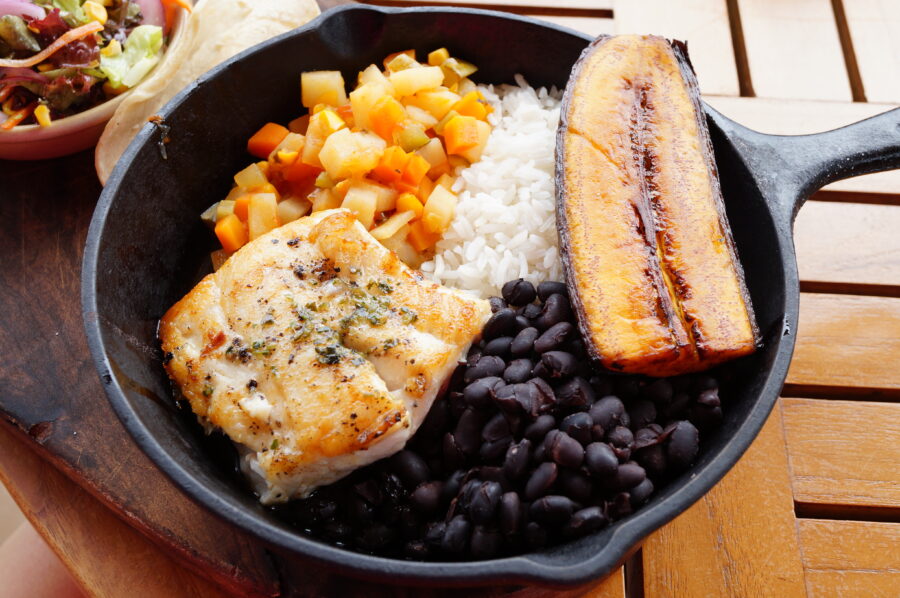
Tamarindo boasts over 100 restaurants with diverse international options. Prices tend to be higher, with mid-range meals running $15-25 per person. You’ll find everything from high-end seafood restaurants to familiar fast-food chains and trendy cafés with reliable Wi-Fi.
San Juan del Sur offers a more authentic Central American dining experience at lower prices. Local meals cost around $5-10, with seafood specialties being particularly fresh and affordable. The town has embraced a farm-to-table movement with several restaurants serving organic, locally-sourced ingredients.
Both locations feature excellent beach bars and nightlife venues. Tamarindo’s establishments generally close earlier, while San Juan del Sur’s party scene often continues into the early morning.
Healthcare and Safety

Tamarindo provides better healthcare infrastructure with a private clinic offering English-speaking staff and basic emergency services. The CIMA hospital is about an hour away in Liberia for serious medical issues. Travel insurance is still highly recommended.
San Juan del Sur has more limited medical facilities—mainly small clinics for minor issues. The nearest major hospital is in Rivas, approximately 30 minutes away, or Managua (2 hours). Pharmacies in both towns can handle common ailments and prescriptions.
Safety concerns differ slightly between locations. Tamarindo has a stronger police presence but occasional petty theft. San Juan del Sur experiences fewer tourist-targeted crimes but less consistent law enforcement. Neither town has serious safety issues when normal precautions are taken.
Real Estate and Long-Term Stays

Both Tamarindo and San Juan del Sur offer intriguing opportunities for property investment and extended stays. The real estate landscapes differ significantly in terms of pricing, regulations, and the overall experience for expatriates considering a move to Central America.
Buying Property
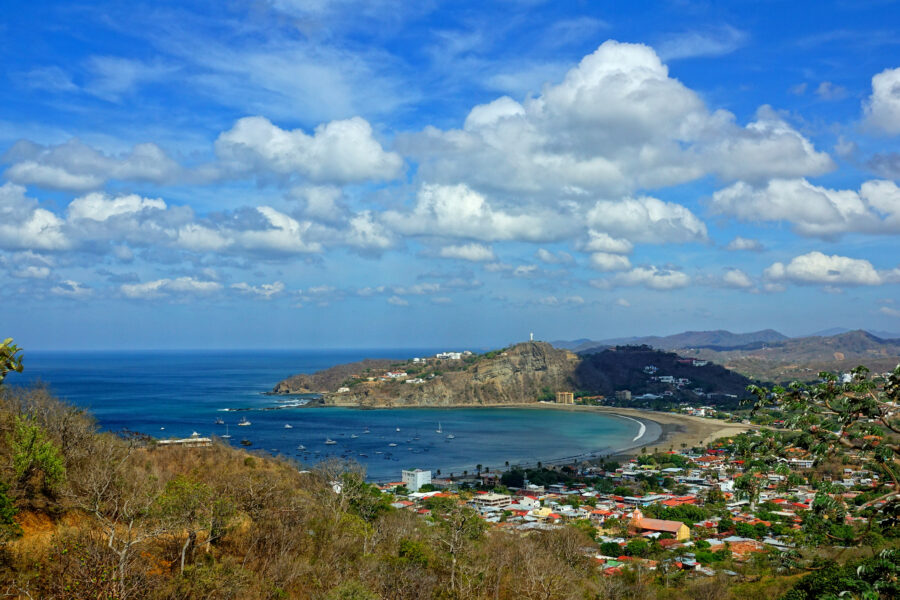
Property values in San Juan del Sur remain considerably more affordable than in Tamarindo. A beachfront lot or home in this Nicaraguan coastal town might cost 30-50% less than comparable properties in Costa Rica. RE/MAX Coastal Properties handles many Nicaragua property listings and can guide buyers through the somewhat complex foreign ownership process.
The Nicaraguan government allows foreigners to own property outright, but working with experienced local real estate agents is essential. Many buyers focus on the hills surrounding San Juan del Sur, where ocean view properties offer stunning sunset panoramas at reasonable prices.
Tamarindo’s real estate market has matured significantly, with more established developments and higher price points. Costa Rica’s stable political climate has traditionally made it a safer investment, though prices reflect this security premium.
Rental Market Trends

Long-term rentals in San Juan del Sur typically range from $400-$800 monthly for basic accommodations to $1,200-$2,000 for luxury properties. Facebook groups dedicated to San Juan del Sur rentals make finding long-term stays relatively straightforward.
The rental yield in San Juan del Sur can attract investors, with vacation rentals generating strong returns during peak tourist seasons. Property managers typically charge 20-30% of rental income for full-service management.
Tamarindo commands higher rental prices across all categories. Monthly rentals start around $800-$1,000 for basic units and can exceed $3,000 for premium properties.
Living as an Expat
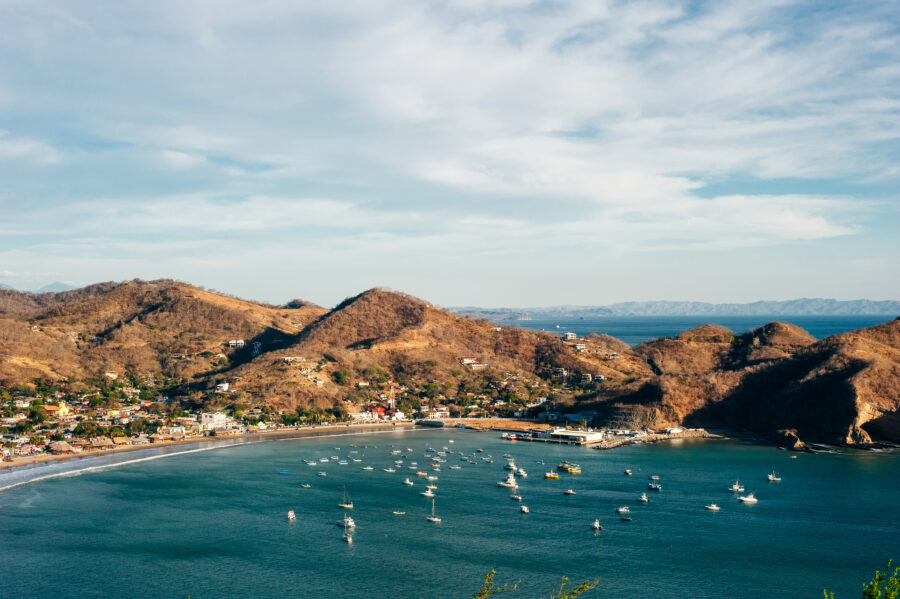
The expat community in San Juan del Sur has grown steadily, attracting digital nomads and retirees seeking affordable beach living. Many newcomers find themselves drawn to the laid-back lifestyle and lower cost of living, as one expat blogger mentioned about relocating “7000 kilometers away on the beach in San Juan Del Sur.”
Daily expenses run 50-60% lower than in Tamarindo, with groceries, dining out, and services all more affordable. The surfing scene attracts many with “basic surfing skills” who find the learning curve and instruction more accessible and affordable than in more developed surf destinations.
Tamarindo offers a more established expat infrastructure with international schools, modern medical facilities, and reliable utilities. This convenience comes with higher costs but provides an easier transition for families and those requiring more amenities and services.
Nightlife and Entertainment
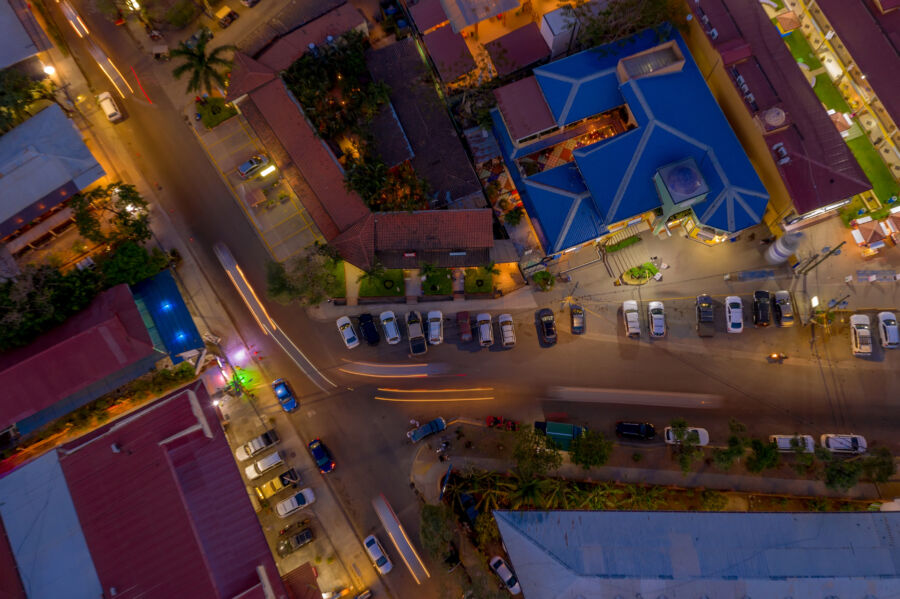
The evening scenes in Tamarindo and San Juan del Sur offer distinct experiences for travelers seeking after-dark fun. Each destination has its vibe, price point, and various activities once the sun goes down.
Bars and Clubs
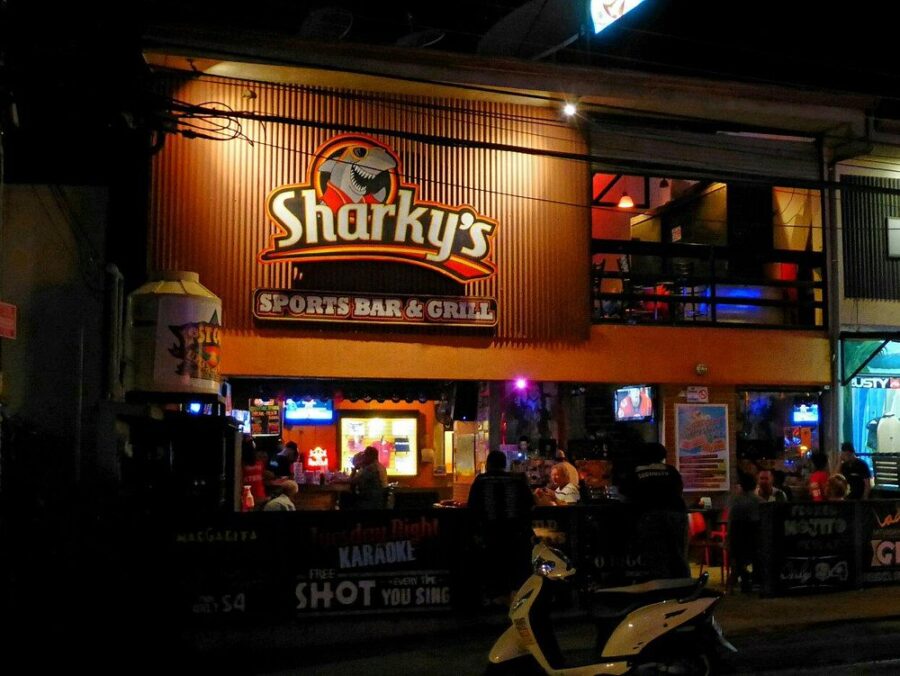
Tamarindo’s nightlife is more developed and tourist-oriented, with a mix of beachfront bars and dance clubs. Drink prices are higher here, averaging about $5-8 per cocktail at most establishments. Popular spots include Sharky’s, Crazy Monkey, and Pacifico Bar, where you’ll find a mix of tourists and locals.
San Juan del Sur has earned a reputation as Nicaragua’s party town. The famous Sunday Funday pool crawl is practically legendary among backpackers. This weekly event takes revelers through multiple hostels and bars for an all-day party that continues well into the night.
San Juan del Sur bars are generally more budget-friendly, with drinks often costing $2-4. Many venues offer special promotions like ladies’ nights or 2-for-1 deals to attract customers.
Evening Activities
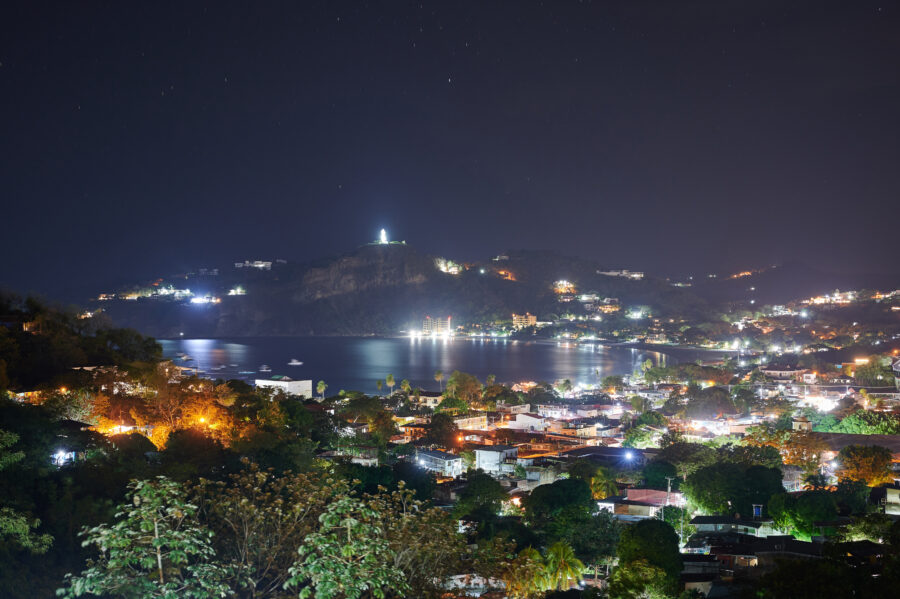
Beyond traditional bars, both towns offer unique evening entertainment options. Tamarindo features several beach restaurants with fire dancers and live music performances, especially during high season. Many visitors enjoy sunset catamaran cruises that include dinner and drinks.
San Juan del Sur offers laid-back evening activities like beach bonfires and impromptu acoustic guitar sessions. The town’s central plaza often hosts local musicians and small cultural events.
Both destinations feature restaurants that transform into lively gathering spots after dinner hours. These venues typically offer drink specials and sometimes have DJs or live bands to entertain diners who want to extend their evening.
Family-Friendly Entertainment

Not all nightlife revolves around drinking. Tamarindo offers several family-appropriate evening options, including beachfront movie nights at certain hotels and restaurants. The weekly farmer’s market often extends into early evening hours with food vendors and local artisans.
San Juan del Sur offers fewer structured family activities after dark. However, the town’s main beach area often has street performers and vendors selling treats like ice cream and churros well into the evening.
Both destinations offer night tours for nature enthusiasts. In Tamarindo, you can join guided sea turtle nesting watches (seasonal), while San Juan del Sur offers night hikes to see nocturnal wildlife in nearby nature reserves.
Many restaurants in both locations provide entertainment suitable for all ages, with live music starting around 7-8 pm before the late-night party crowd arrives.
Costs and Budgeting

When comparing Tamarindo and San Juan del Sur, your wallet will notice a difference. The price gap between these two beach destinations is significant and might decide your travel plans.
Daily Expense Breakdown

San Juan del Sur’s average daily cost is about $66 per person, while Tamarindo will set you back around $144 daily. This huge difference affects every aspect of your trip.
Accommodation in San Juan del Sur is dramatically cheaper. A decent hostel bed might cost $10-15, while similar options in Tamarindo start around $20-25. For mid-range hotels, expect to pay $40-60 in Nicaragua versus $100-150 in Costa Rica.
Food expenses follow the same pattern. A typical meal at a local San Juan del Sur restaurant costs $5-8, but you’ll pay $12-20 for similar fare in Tamarindo. Street food is your friend in both places, but it still costs about half as much in Nicaragua.
Transportation around town is budget-friendly in both locations, but taxis and tours in Tamarindo typically cost 50-75% more than in San Juan del Sur.
Luxury vs. Budget Travel
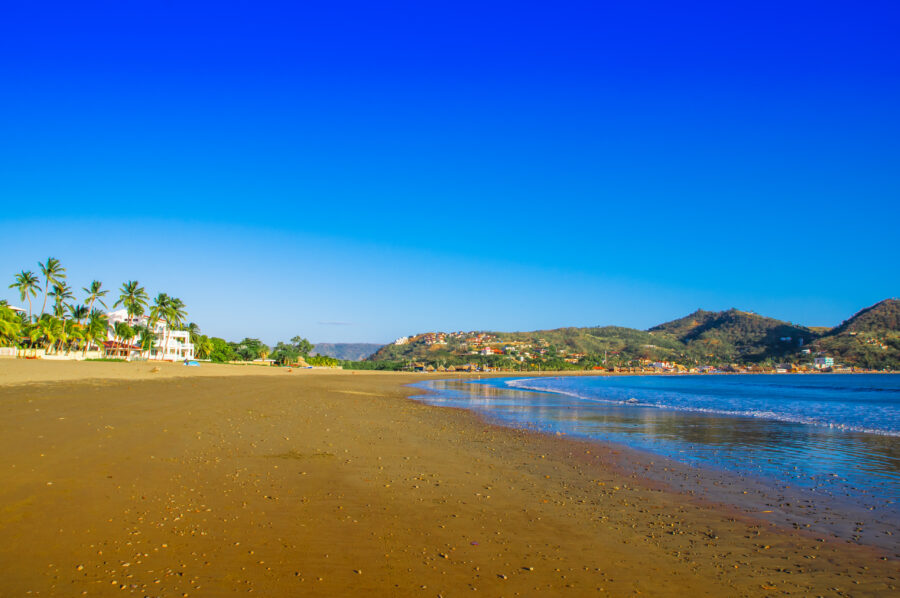
Both destinations cater to different types of travelers, but your dollar stretches much further in San Juan del Sur.
For luxury travelers, Tamarindo offers high-end resorts starting around $200-300 per night, with ocean views and premium amenities. Comparable luxury in San Juan del Sur might run $100-175 per night.
Budget travelers will find San Juan del Sur extremely accommodating. You could comfortably enjoy a week there for what three days might cost in Tamarindo. With careful planning, backpackers can get by on $30-40 daily in Nicaragua.
The quality of luxury experiences tends to be similar in both locations, but Tamarindo has more upscale options. San Juan del Sur offers great value even at higher prices, with beachfront dining experiences costing half what you’d pay in Costa Rica.
Money-Saving Tips
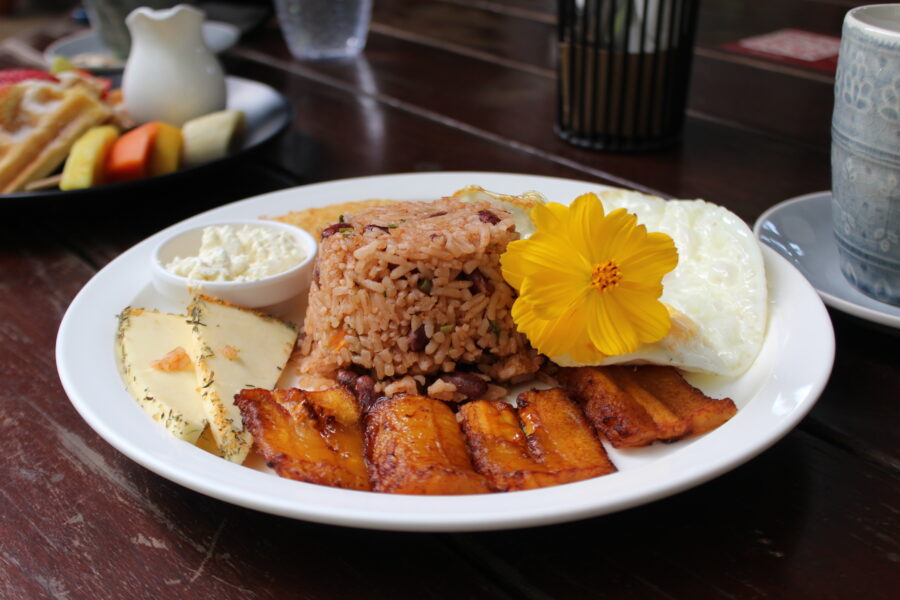
Smart planning can significantly reduce costs in both locations. In San Juan del Sur, eat where locals eat—small “comedores” offer hearty meals for $3-5. The Sunday Funday pool crawl ($30) is pricier but includes transportation and entrance to multiple venues.
For Tamarindo, visit during the green season (May-November) when prices drop 20-30%. Many restaurants offer happy hour specials with half-price drinks and appetizers between 4-6 pm.
Grocery shopping helps in both locations. A bag of basics costs about $25 in San Juan del Sur and $40 in Tamarindo. Shared kitchens in hostels make this option practical.
Consider package deals for activities. Surf lessons run $20-25/hour in San Juan del Sur versus $50+ in Tamarindo. Many hostels offer free or cheap shuttle services to nearby beaches in both towns—take advantage of these instead of taxis.
Frequently Asked Questions
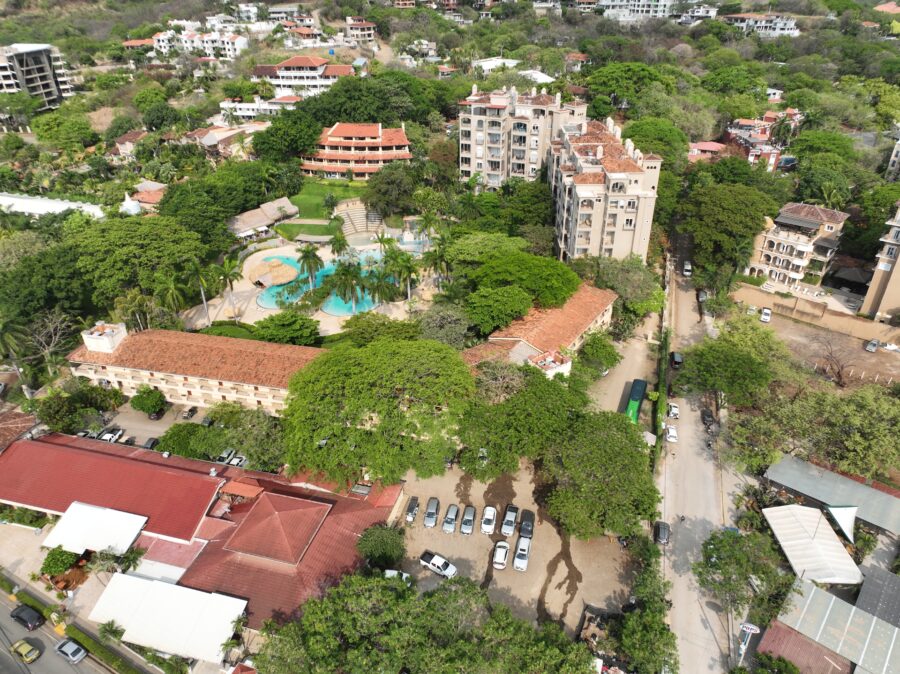
Travelers considering Tamarindo or San Juan del Sur often have specific questions about what makes each destination unique. Despite their proximity and similar beach vibes, these coastal towns offer distinct experiences.
What are the main differences in tourist attractions between Tamarindo and San Juan del Sur?
Tamarindo offers a more developed tourist infrastructure with organized tours to nearby national parks and wildlife refuges. Activities like catamaran sunset cruises, estuary tours, and easy access to Rincon de la Vieja National Park are available.
San Juan del Sur has a more laid-back approach to tourism. The iconic Christ of Mercy statue overlooking the bay is a must-visit attraction. Nearby beaches like Playa Maderas and Playa Hermosa are less crowded than Tamarindo’s main beach.
The surrounding area of San Juan del Sur also features volcanic lakes and colonial architecture that you won’t find in Tamarindo.
Which destination offers a richer cultural experience, Tamarindo or San Juan del Sur?
San Juan del Sur generally provides a more authentic cultural experience. Despite tourism growth, the town maintains much of its fishing village charm. Local Nicaraguan traditions and festivals are regularly celebrated, and interactions with locals feel more genuine.
Over the years, Tamarindo has become highly internationalized. While this creates a comfortable environment for tourists, it has somewhat diluted the traditional Costa Rican cultural experience.
Tamarindo has more expats and international influences, while San Juan del Sur retains stronger ties to local Nicaraguan culture and traditions.
Tamarindo boasts a vibrant nightlife with numerous bars, clubs, and restaurants catering to international tourists. The party scene is more developed and runs later into the night. Beach bars and live music venues create a lively atmosphere throughout the week.
San Juan del Sur has earned a reputation for its legendary Sunday Funday pool crawl. The town has a more concentrated party scene with fewer venues but equally enthusiastic energy.
Both towns attract a younger crowd looking for social experiences, but Tamarindo offers more variety and options for nightlife throughout the week.
In terms of budget, how do travel costs in Tamarindo compare to San Juan del Sur?
San Juan del Sur is significantly more budget-friendly than Tamarindo. The average daily cost per person in San Juan del Sur is around $66, while Tamarindo averages about $144 daily.
Accommodation, food, and activities are all cheaper in Nicaragua. In Tamarindo, you’ll find hostels and budget accommodations at nearly half the price of similar options.
Transportation costs within Nicaragua are also lower, making day trips to other destinations more affordable. This budget difference allows travelers to extend their stay or upgrade their experiences in San Juan del Sur.
What unique culinary experiences can one expect in Tamarindo versus San Juan del Sur?
Tamarindo offers a more international dining scene with restaurants featuring cuisines worldwide. Fresh seafood is abundant, but prices are higher. Costa Rican specialties like casado and gallo pinto are available, but sometimes take a backseat to international options.
San Juan del Sur focuses more on local Nicaraguan cuisine with strong Spanish influences. Fresh fish and seafood are often prepared simply but deliciously.
Both towns serve excellent coffee, but Nicaragua’s beans have a distinct profile worth trying. Street food is more prevalent and authentic in San Juan del Sur, providing a tasty window into local culture.
Are there any significant differences in the surfing conditions between Tamarindo and San Juan del Sur?
Tamarindo offers gentler waves that are ideal for beginners learning to surf. The main beach has consistent breaks and numerous surf schools with patient instructors. Nearby beaches like Playa Grande also have more challenging waves for advanced surfers.
In San Juan del Sur, the bay doesn’t have good breaks, so you must take a short trip to the actual surfing beaches. Nearby spots like Playa Maderas offer more challenging waves for intermediate to advanced surfers.
Both locations have similar water temperatures, but Tamarindo can get crowded, especially during peak season. On the other hand, San Juan del Sur’s surf spots typically have fewer people competing for waves.



